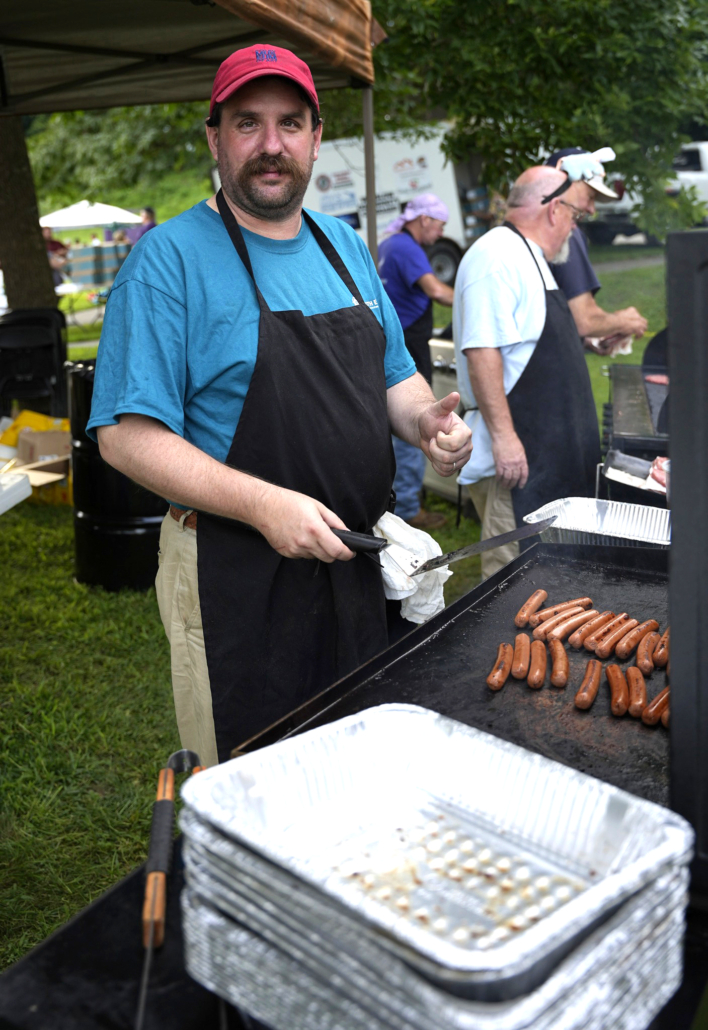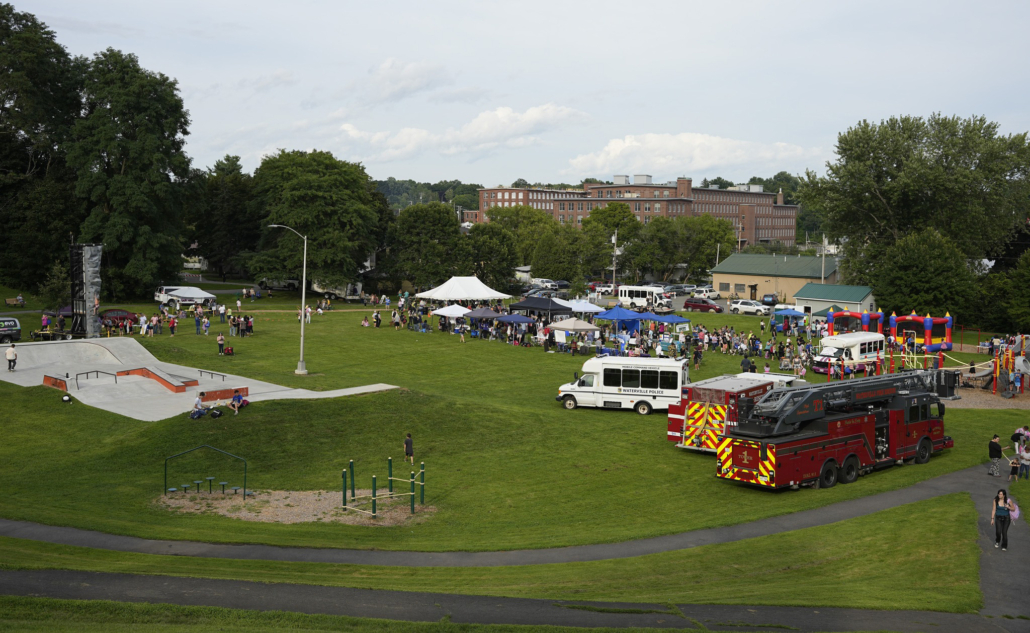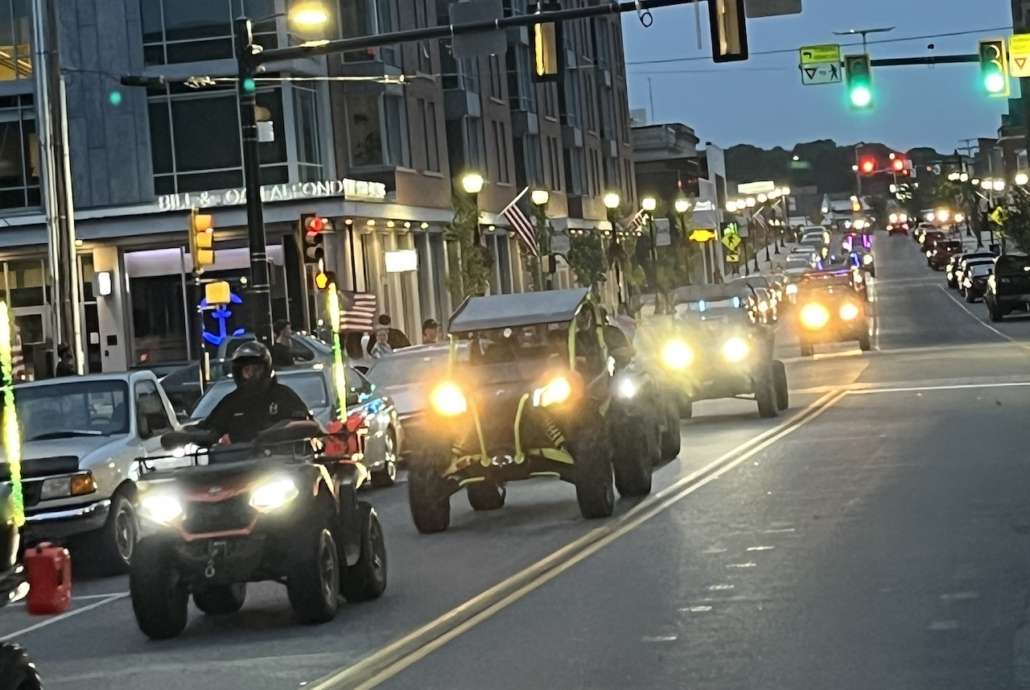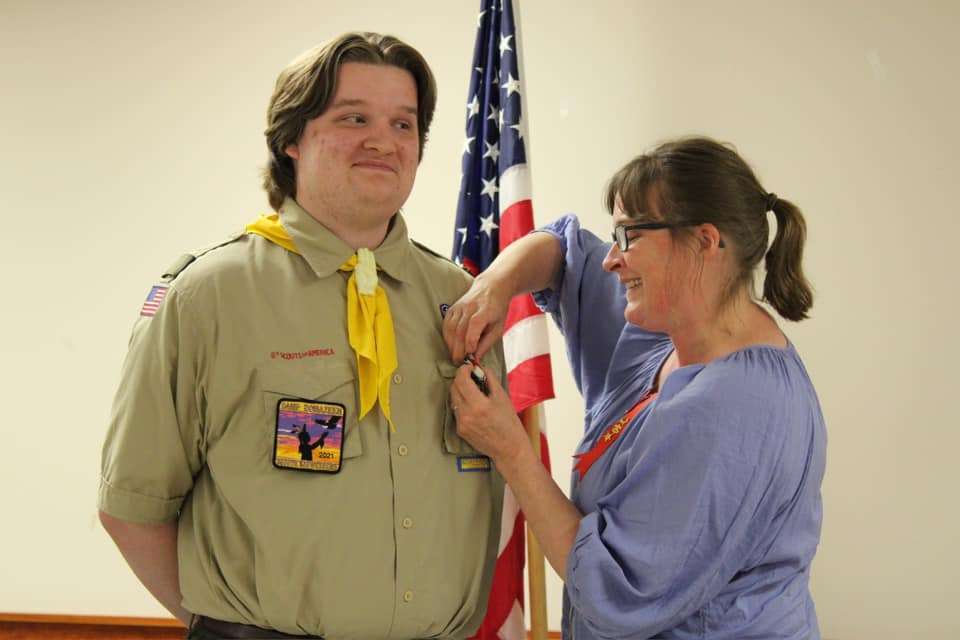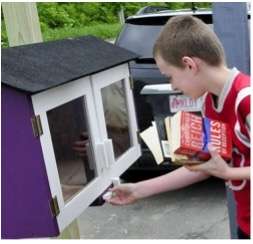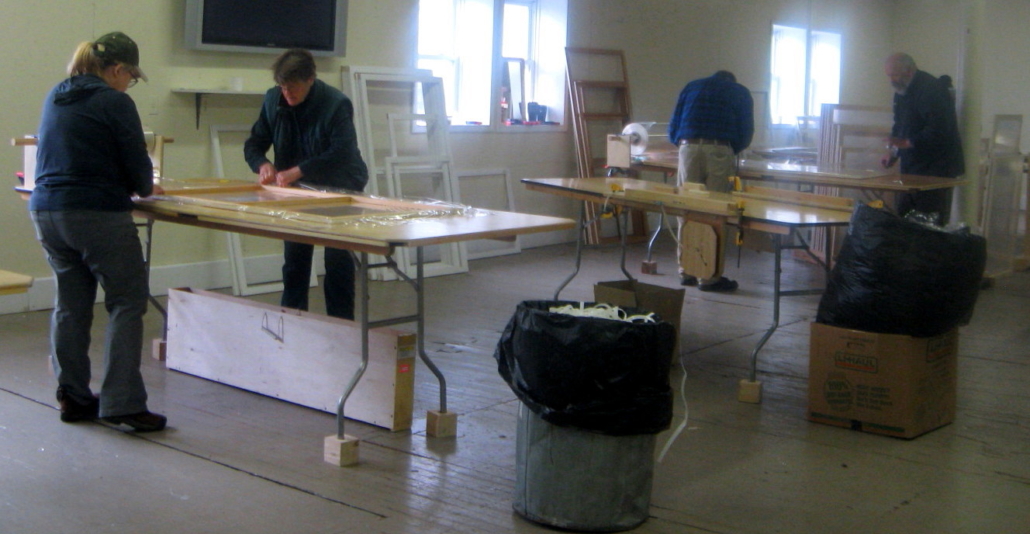
Volunteers hard at work assembling insulated window inserts. (photo by Roberta Barnes)
Our nights becoming chilly is a reminder to begin preparing for winter.
One of the first places to focus on is your windows.
While replacement energy efficient windows might not fit into your budget, insulating window inserts are affordable and assembling them with others can be enjoyable.
Last November I was one of the people who, after having windows measured by volunteers from WindowDressers, joined others like me, and volunteers, from China, Vassalboro, Windsor and Albion at the Vassalboro Mill to assemble insulating window inserts.
Together we securely assembled wooden frames, covered each side of the frame with strong clear plastic, and added foam edges.
The strong plastic securely sealed on all sides of the frame forms the pocket of insulating air that can help to keep your home warm.
While completing each insulating window insert requires the correct equipment, materials, instruction, and time, the atmosphere was so enjoyable that people volunteered for extra shifts.
This year the location in Vassalboro has changed and there is also a location in Waterville which can be seen on the WindowDressers website.
Today you can either request window inserts by filling out the form online on the website https://windowdressers.org/ or sign up to volunteer.
In Maine you can also call (207) 596-3073. The deadline for signing up for inserts is September 15, 2024.
The cost for these insulting window inserts is kept affordable by the donations and volunteers helping to assemble the inserts.
You can estimate the cost of the inserts on the windowdressers.org website. There is also a low or no-pay Special Rate Program where you pay what you can afford.
You can discuss paying for your inserts with the person or people from WindowDressers when they come out to measure the windows.
There may be a limit of 10 inserts for this Special Rate Program.
The deadline for signing up to receive the window inserts for this winter 2024/2025 is September 15, 2024.
It is best if you go online today at https://windowdressers.org/, or call (207) 596-3073. Doing this can help you keep the chilly air outside your windows and enjoy being one of the people assembling the inserts in a friendly upbeat atmosphere.
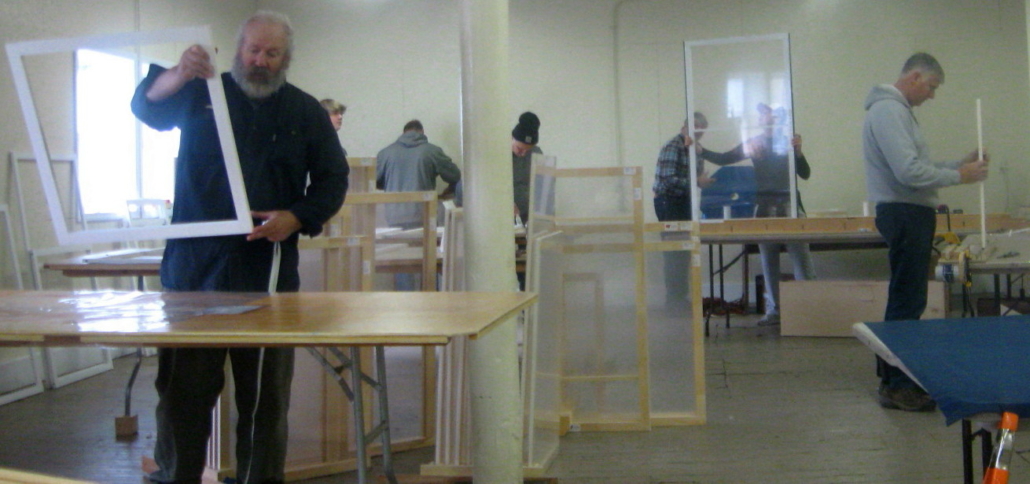
(photo by Roberta Barnes)




 All veterans and community members are invited to participate in the Waterville Veterans Day parade on Monday, November 11, 2024. Lineup begins at 10 a.m., at The Elm, 21 College Ave. Waterville. A ceremony will be held at Castonguay Square, on Main St., at 11 a.m. It will be followed by lunch at MacCrillis-Rousseau Veterans of Foreign Wars Post #8835, on Veterans Drive, in Winslow.
All veterans and community members are invited to participate in the Waterville Veterans Day parade on Monday, November 11, 2024. Lineup begins at 10 a.m., at The Elm, 21 College Ave. Waterville. A ceremony will be held at Castonguay Square, on Main St., at 11 a.m. It will be followed by lunch at MacCrillis-Rousseau Veterans of Foreign Wars Post #8835, on Veterans Drive, in Winslow.

